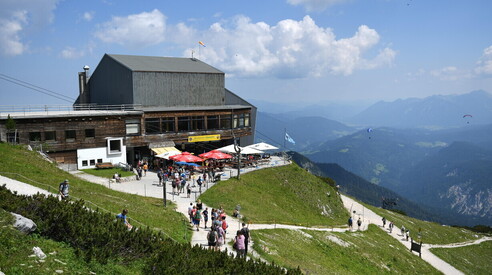Summer tourism isn't a flop, it's just changed face. Assoturismo's version


Ansa photo
Italian summer
"August isn't the only season anymore; holidays are spread out throughout the season. Travel continues, but with a more careful eye on costs," says Assoturismo president Vittorio Messina.
On the same topic:
The Italian summer is no longer what it used to be. Deserted cities, crowded beaches, large suitcases stuffed in trunks, two-week holidays in August. This is a picture that no longer reflects the Italian reality. Today, holidays are spread out across the entire season; people leave earlier, return later, spend more carefully, and choose shorter but more frequent vacations. "Summer is no longer just August. Holidays are spread out across the entire season, often concentrated into long weekends. Families continue to travel, but with a more careful eye on expenses: maybe one less day at the beach, one less dinner out, but the holiday doesn't go off," explains Vittorio Messina , president of Assoturismo , speaking to Il Foglio. A trend confirmed by the numbers: 36.1 million Italians travel, and more than a third have at least two vacation periods planned between June and September.
“In the post-Covid years, we had become accustomed to consistent and consistent growth . Now, however, we are faced with a slight setback that shouldn't alarm us, but rather give us pause. International tensions, high energy prices, and rising interest rates are having an impact. A small slowdown was predictable,” says Messina, emphasizing the need to understand the structural changes in the sector. Tourism, which generated over €225 billion in 2024—equivalent to 11 percent of GDP—is sensitive to every external variable. “The climate is changing travel habits. The high season now starts in mid-July and extends until almost October. Our sector must be able to identify these new behaviors and adapt quickly.” This need to adapt is reflected in the growing focus on sustainability, contact with nature, and the search for authenticity, increasingly determining factors in the choices of Italian and foreign tourists.
It's no surprise, then, that while July saw a decline in beach attendance and spending compared to June, alternative locations like the mountains gained ground. Is it all the high cost of beach umbrellas? "The price increases have hit the beach industry hardest , forced to raise prices to cope with rising costs. It's inevitable that this will impact visitor flows. But Italian tourism is fortunate to be supported by a rich and diverse offering: cities of art, hills, lakes, and villages represent an important resource," says the president of Assoturismo. "Being able to read these changes early is crucial for businesses. If we don't anticipate them, we risk being affected. And we can't afford to be overwhelmed by dynamics we must guide," concludes Vittorio Messina.
More on these topics:
ilmanifesto





